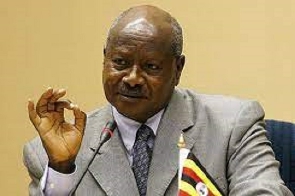The pride that comes with being a Ghanaian is one that cannot be explained. From being the first African country to gain independence; the numerous men and women making great strides on the international scene; our dominance in world football; the attractive nature of business on our shores to the leading strides Ghanaians are making in the creative industries; being Ghanaian could not be a more rewarding experience.
As such, the Ghanaian wants to always showcase his/her identity because of the pride of being a citizen. Despite the many avenues to express the Ghanaian identity, textiles and printed fabrics seem to be quite the popular choice.
The designs that make textiles look beautiful and unique are inspired by indigenous Ghanaian culture that seeks to include and project the culture of all the various ethnic groups in the country.
There are over one hundred ethnic groups in Ghana, all of which have very interesting histories that come together to promote the uniqueness of the Ghanaian identity. All these ethnic groups put together, attest the fact that Ghana is indeed a culture-rich country whose citizens exhibit the beauty of their individual cultures at any given opportunity.
One of the most common ways of exhibiting culture is through dressing. We are able to tell the culture one belongs to simply by the way one dresses up. Kente is found in most ethnic groups in Ghana however, there are differentiators based on each ethnic group that produces them.
In that same vein, textile companies, such as GTP, also try to capture the Ghanaian culture. The colours used for the print and the designs that are reflected are all informed by culture. For instance, even though all Akan tribes wear Kente, the Fante Man will often wear it with a shirt beneath it, while the Ashanti Man will opt to go shirtless. Again, Kente designs also communicate where the person wearing it comes from.
Textile companies also capture the Ghanaian culture based on the class of people in society. There are some particular cloths and designs that appeal to the more affluent in society simply because it magnifies their status in society.
There are some prints that pregnant women would not wear because their culture prohibits them. The benefits we derive from the portrayal of culture through clothing and fashion is enormous. It gives people great pride to wear their Ghanaian-made attire because it makes them feel proud of their heritage.
In this world of accelerated development, the tendency to compromise on one’s culture in order to feel accepted by another is very high and fashion and design is one of the easiest ways to showcase one’s culture without saying much. There is a reinforced sense of pride and belonging.
Finally, as a people, being able to dress based on our culture goes a long way to solidify our sense of purpose and unity. At any given time, we try to portray our culture to each other and to the global community and textile companies have done a great job by capturing frames of the Ghanaian culture in their products.
Fashion of Tuesday, 18 June 2019
Source: gtpfashion.com
The Ghanaian identity in print
Business












